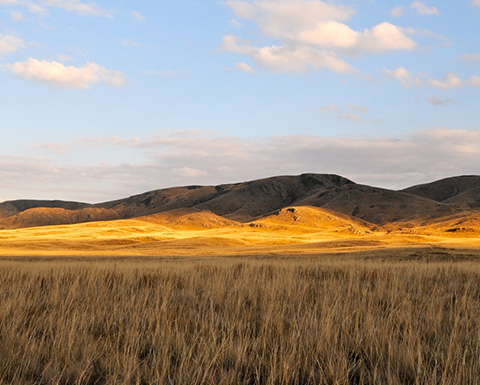
Last October, a grant from the Pulitzer Center enabled me to visit Semipalatinsk, the nuclear testing ground where the Soviet Union detonated 456 nuclear bombs during the Cold War. I can't imagine a sadder place on earth. When the Soviet Union withdrew from Kazakhstan, it left behind not only an ecological catastrophe, but also an international security nightmare—dozens of bombs worth of plutonium remained in the tunnels used for underground testing. In a report published by Harvard and a dispatch for The Washington Post, my co-author David Hoffman and I told the story about how some of the scientists who tested nuclear weapons during the Cold War came to cooperate to secure the residual material at Semipalatinsk against potential theft from local scavengers.
The 17-year operation was a great triumph for these scientists; many were given awards by the U.S., Russia and Kazakhstan. But it was never clear to me whether the mission should be viewed as an act of atonement rather than heroism. Many of the scientists involved in the operation at Semipalatinsk had dedicated their considerable intellect and vigor to the design and testing of nuclear weapons rather than nobler pursuits. They chose to put the dubious security imperative of building niftier hydrogen bombs ahead of long-term environmental or proliferation concerns. Does cleaning up their own mess right the balance?
Writing impartially about nuclear weapons can be difficult—they tend to evoke strong emotions. Are they peacekeepers or moral obscenities? My co-author David Hoffman, who chronicled the collapse of the Soviet Union and the dangerous nuclear legacy left behind in his outstanding book, "The Dead Hand," was a steady reminder as we worked on the piece together that our obligation as journalists was to the facts. "Just collect the bricks and build the structure," was his sage advice. And so we did.
But as I worked on the piece, I remained troubled that progress toward unraveling the dangerous legacy of the Cold War arms race has been so slow, and will be so complicated.
As a very basic first step, the global community seems to lack the political or moral will to start the difficult process toward disarmament. Nuclear weapons states are eager to help clean up Semipalatinsk, or punish proliferating countries for attempting to join the nuclear club (both worthy endeavors), but are unwilling to even begin to discuss how they intend to safely and securely disarm.
In my mind that is a moral failure as much as a threat to global peace. Shortly after I returned from Kazakhstan, as I was working with David on our report, a tragic shooting at Sandy Hook Elementary School in Connecticut seemed to momentarily focus Americans on the need to seriously address gun control. But even as we seemed willing as a nation to begin the difficult but crucial conversation about controlling the most prevalent weapons in America, we seemed unwilling to also address the most deadly.
That irony hit home to me as I watched President Obama give a heartfelt speech following the Sandy Hook shooting about our responsibility to protect innocent children. That, he told us, is how we will be judged as a society. He was accompanied at the vigil—as he is shadowed everywhere he goes—by a military official carrying a device known as "the football." It's such an innocent-sounding sobriquet—like something Obama would toss around with his daughters Sasha and Malia on the White House lawn. The football is, in fact, a military communications system designed to immediately launch hundreds of nuclear-tipped missiles that have no self-destruct button and cannot be called back. We ask of our democratically-elected President that he be ready at all times to be the trigger man for a nuclear holocaust that would incinerate millions of children and other innocents, and fatally poison millions more.
As a democracy, we don't seem ready to talk seriously about the urgent moral imperative of properly addressing the legacy of the Cold War. What will it take for that to change?







